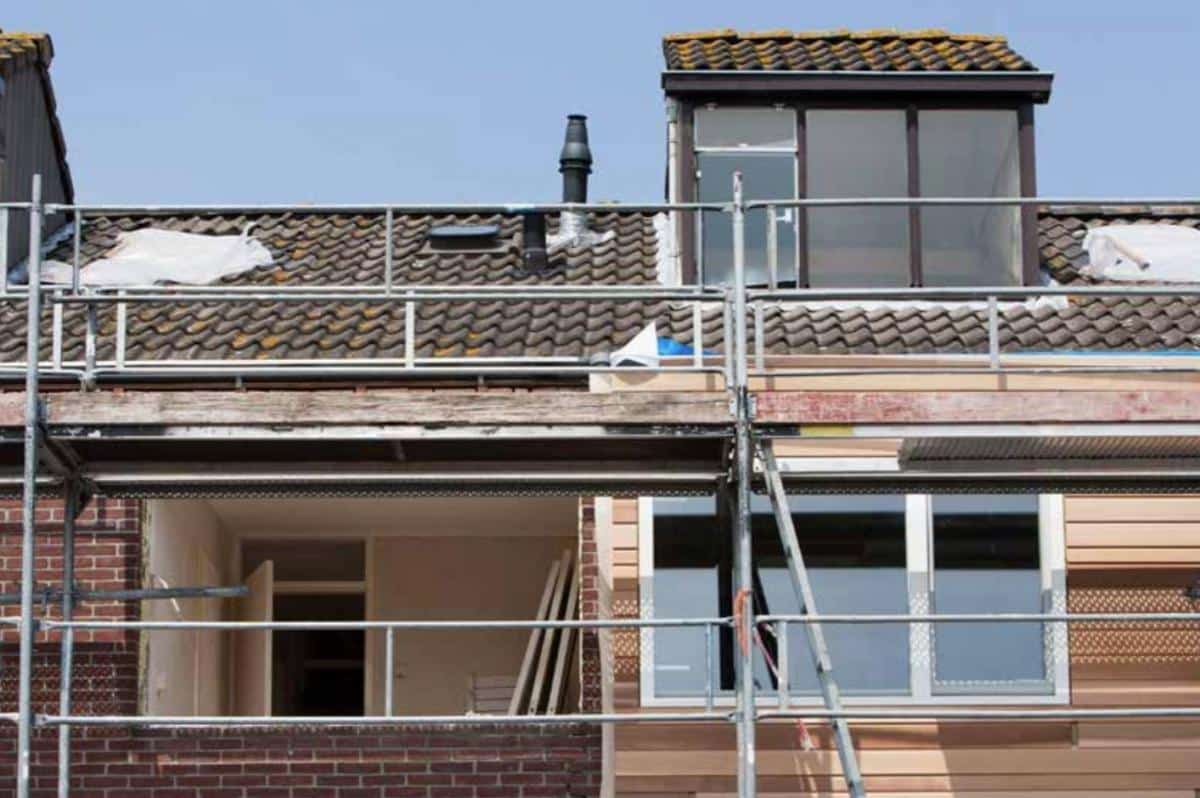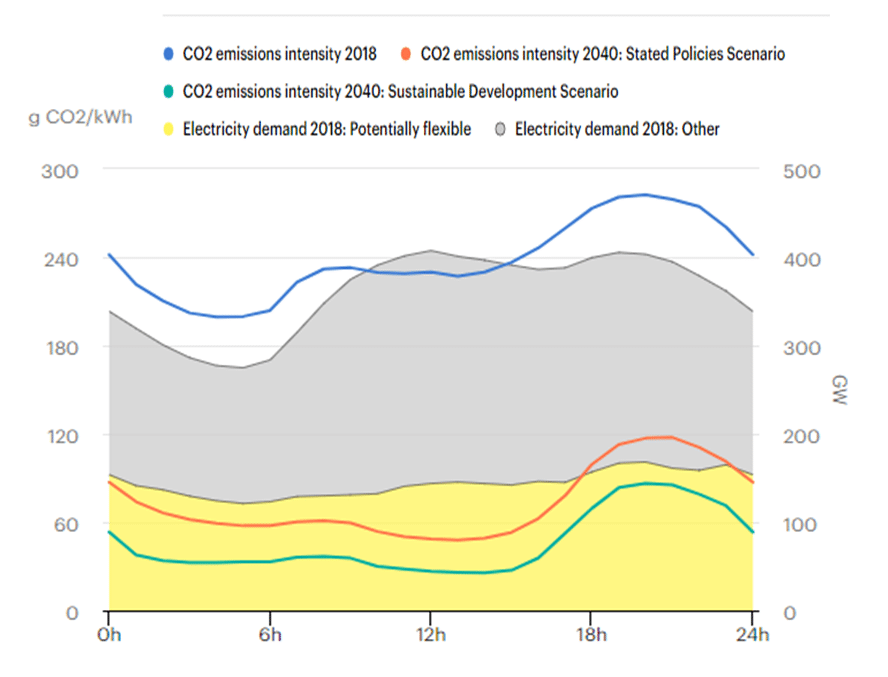Expert Talk: Buildings of the future: consuming smarter, not merely less
“Not only consuming less, but also consuming smarter. That is key to drastically decrease the climate impact of our buildings, which are responsible for more than one third of EU’s CO2-emissions.” In this expert talk Chris Caerts (EnergyVille/VITO) explains why, to reach our decarbonization targets, it is essential to better manage WHEN we consume. Because smart & efficient consuming are two sides of the same coin.”
Our energy system is undergoing a transition towards a more sustainable and carbon-free future. Buildings play a key role in this transition. They are currently responsible for approximately 40% of the energy consumption and 36% of the CO2-emissions in the European Union, primarily for heating and hot water generation. On average, space heating accounts for 64 % of an EU household’s energy consumption, and water heating accounts for an additional 15 %. Space cooling represents only a marginal part (0.3%), except for the Mediterranean countries where it accounts for approximately 5 to 8 %[1]. Though the share of cooling is on the rise (+44% short term to +300% long term) by the combined effect of climate change (rising average temperatures) and more energy efficient (i.e. better insulated) buildings that suffer from overheating issues during summer[2].

(Source Eurostat: data from 2017[3])
Nowadays, the efforts of reducing emissions of the EU building stock mainly focus on reducing the energy consumption, specifically for heating e.g. by ensuring proper insulation of the building envelope. The Energy Performance of Buildings Directive (EPBD)[4] enforces binding requirements for new buildings and major renovations. Whereas this directive has resulted in a clear improvement of the new buildings, there is an immense challenge for the existing building stock. Both demolition and construction rates are low (about 1% a year)[5]. Achieving the 2050 targets would mean that 97% of the current buildings would have to be thoroughly retrofitted[6]. This is a huge challenge in terms of financing (investments) and construction capacity. To meet the EPBP targets, the annual rate of deep energy renovation across the EU member states should reach 3%, whereas currently only 0.15% is accomplished[7]. For Flanders specifically, this 3% target would mean that daily 250 buildings must be renovated to zero-emission[8].
Upgrading a current single family residential building with a new envelope comprising up-to-standard insulation and glazing, and adding a matching HVAC installation, may require a budget ranging from €50.000 to well over €100.000. Looking at this purely from a financial perspective, the expected pay-back time from the energy cost savings ranges from 40 years to over 100 years. Even with support schemes, and considering other benefits like improved comfort and increased value of the building, this is a hard nut to crack, which explains the slow progress on specifically deep renovations that have the highest impact on emission reductions.

Another way to reduce emissions, is by means of the electrification of heating and domestic hot water generation. Currently in the EU, most of the space heating (57%) and domestic hot water generation (58,5%) is supplied by fossil fuels (gas and oil)[9]. By replacing fossil fuel based equipment by for instance heat-pumps that run on electricity, emissions at the building level are removed. Of course, there are still emissions related to the electricity generation, but due to the higher efficiency of heat-pumps (that typically have an average Seasonal Performance Factor of 3) versus even the most efficient condensing gas boilers (that typically have an efficiency of slightly over 0.9) the emission reduction is significant. And it even becomes better if we take into account the so-called carbon intensity of the electricity generation which is impacted by the amount of emission-free sources (typically wind, solar and nuclear). Whereas the carbon intensity of natural gas is about 198g CO2/kWh, the carbon intensity of electricity in Belgium is about 170g CO2/kWh (2016 number). At EU level, this is still about 296g CO2/kWh due to lignite and coal based generation, but this number is dropping rapidly due to the replacement by natural gas, wind and solar. As an illustration: between 2000 and 2016, the EU carbon intensity dropped from 405g to 296g CO2/kWh, while for Belgium, it dropped from 274g to 170g CO2/kWh.
This carbon intensity is not a constant number though: it fluctuates during the day, reflecting the amount of solar and wind energy that is available at any given moment. Hence to reduce emissions, the timing of the consumption becomes important. If you manage to consume electricity at times when your own PV panels are generating, your emissions drop to zero at that moment. But also the electricity taken from the grid varies a lot in relation to the instantaneous energy mix. In the European Union, where wind and solar PV already contribute 16% of electricity generation, the hourly CO2 intensity of electricity varies by a factor of 1.4 across an average day. This means for instance that using electricity at 8 PM emits 280g CO2/kWh, while at 6 AM the intensity averages only 200g CO2/kWh. As can be seen in the graph below, by 2040 one expects to not only see a steep decrease of the average carbon intensity to well below 100g CO2/kWh, but also the variability across an average day would increase to a factor of 2.5, and vary between 48g and 118g CO2/kWh. So the time when energy is consumed becomes even more important. For other countries, like India, the intra-day variability may amount even to a staggering factor of 7.

Source: IEA, “Average CO2 emissions intensity of hourly electricity supply in the European Union, 2018 and 2040 by scenario and average electricity demand in 2018″[10]
This calls for a smart control of consumption, that actively steers consumption to maximally coincide with times when the carbon intensity is the lowest. With proper incentives in energy contracts and tariff structures, this as well could reduce the energy cost for smart consumers and buildings. EnergyVille is developing solutions for smart building control which optimally shift and modulate flexible energy consumption without loss of comfort. The prime focus is on smartening heating and domestic hot water generation, as these are the largest sources of consumption and the prime source of emissions. Moreover, they can be electrified (using heat pumps) and they offer flexibility that is a prerequisite for such smart control: the thermal inertia and storage capacity of the building mass or water makes it possible to actively steer a heat-pump’s consumption without impacting comfort. By using monitoring data made available by digitalization and IoT, multi-zone dynamic thermal models of buildings can be created in a replicable automated way. These models are used to determine optimal consumption plans that take into account building characteristics, tenant habits and preferences, and relevant forecasts. The optimization can be done for various objectives, like minimal cost (if there are dynamic prices) or minimal emissions (if there are carbon intensity forecasts and certificates of origin). The optimization determines a heatpump consumption profile that results in an indoor temperature profile that still respects comfort settings, yet is different from the temperature profile that would be seen with a traditional thermostatic control (see picture below). To be able to follow this optimal consumption plan as closely as possible, heat-pump control strategies that improve the determinism and granularity of the heat-pump consumption, have been explored in the FHP project[11].

Illustration of indoor temperature profile achieved through traditional thermostatic control (left) versus smart control (right).
From the above, it is clear that electrification combined with smart control can offer a substantial contribution to the reduction of building emissions. It is important to note though that it is not an alternative to energy efficiency measures, but rather is an accompanying measure. Heating with heat-pumps in poorly insulated buildings would not only be prohibitively expensive, but also constitute a drag on the energy system as a whole and waste valuable renewables. The electrification of heating assumes a minimal level of energy efficiency, i.e. when the building is very energy inefficient, a number of energy efficiency measures must be applied in alignment with the electrification. In the AmBIENCe project[12], a collaborative H2020 project coordinated by EnergyVille/VITO, an Active Buildings Energy Performance Contracting concept is therefore being developed that extends the traditional EPC concept with an additional value stream resulting from the smart control of flexibility (i.e. Demand Response). The Active Building EPC concept will, for a given building, determine the optimal balance between energy efficiency measures on the one hand, and electrification plus smart control on the other hand. It will determine the financially most viable way to achieve an emission reduction target as a combination of energy efficiency measures, electrification and smart control.

The AmBIENCe project also extends the smart control concept to clusters of buildings forming energy communities. This increases the flexibility utilization and valorization potential by optimally coordinating among buildings, and by offering services with the aggregated flexibility to grid operators or market stakeholders. Such flexibility services facilitate the integration of more wind and solar by offering balancing and congestion management support, and make investments in vRES like wind and solar more attractive by mitigating curtailment. Furthermore, such community level management of flexibility encourages the local consumption of locally produced energy, which has a positive impact on minimizing grid losses.
If you want to be regularly informed on the activities and outcomes of the AmBIENCe project and receive the regular newsletter, you can register as a stakeholder at the project website.
The FHP project and the AmBIENCe project receive(d) funding from the European Union’s Horizon 2020 research and innovation programme under grant agreement No. 731231 and No. 847054 respectively.
[1] https://ec.europa.eu/eurostat/statistics-explained/index.php/Energy_con…
[2] Assessment of the impact of climate change on residential energy demand for heating and cooling (https://publications.jrc.ec.europa.eu/repository/bitstream/JRC110191/jr…)
[3] Source: Eurostat EU28 (2017), “Energy Consumption in Households”, https://ec.europa.eu/eurostat/statistics-explained/index.php/Energy_con…
[4] https://ec.europa.eu/energy/en/topics/energy-efficiency/energy-performa…
[5] https://www.europarl.europa.eu/RegData/etudes/STUD/2016/587326/IPOL_STU…
[6] http://bpie.eu/publication/97-of-buildings-in-the-eu-need-to-be-upgrade…
[7] https://ec.europa.eu/energy/en/studies/comprehensive-study-building-ene…
[8] https://www.energysavingpioneers.be/sites/default/files/files/190919-bb…
[9] Source: Eurostat EU28 (2017), “Energy Consumption in Households”, https://ec.europa.eu/eurostat/statistics-explained/index.php/Energy_con….
[10] IEA, Paris https://www.iea.org/data-and-statistics/charts/average-co2-emissions-in….
[11] H2020 Flexible Heat and Power project, http://fhp-h2020.eu/.
[12] H2020 AmBIENCe project, http://ambience-project.eu/
